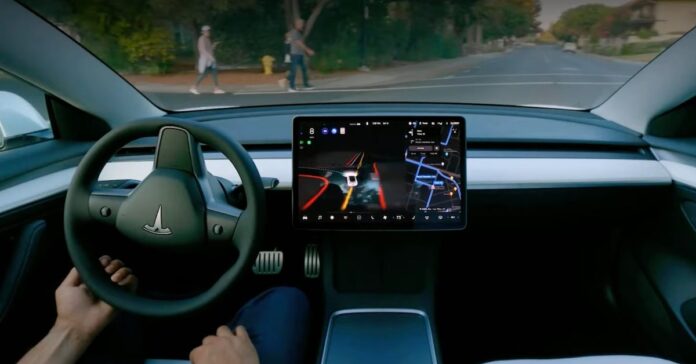Tesla has applied for a permit to operate a ride-hailing service in California, but it will be using human drivers rather than the promised robotaxi.
Last year, Tesla CEO Elon Musk claimed that Tesla would launch “unsupervised self-driving in Texas and California in Q2 2025.”
However, we suspected that this would not be “unsupervised self-driving’ in customer vehicles like Tesla has been promising since 2016, but an internal fleet with teleoperation support in a geo-fenced area for ride-hailing services, much like Waymo has been doing for years.
Sure enough, Musk confirmed last month that this was the plan for Austin in June. We describe this as a “moving of the goal post” for Tesla.
With the focus on Austin in June, Tesla stopped talking about California, which was announced to happen at the same time as Texas last year.
Now, Bloomberg reports that Tesla has applied for a ride-hailing permit in California:
The electric vehicle manufacturer applied late last year for what’s known as a transportation charter-party carrier permit from the California Public Utilities Commission, according to documents viewed by Bloomberg. That classification means Tesla would own and control the fleet of vehicles.
But this application is for a regular ride-hailing service, like Uber, albeit for an internal fleet rather than vehicles operated by customers.
Tesla has yet to apply for a permit to operate driverless vehicles:
In its communications with California officials, Tesla discussed driver’s license information and drug-testing coordination, suggesting the company intends to use human drivers, at least initially. Tesla is applying for the same type of permit used by Waymo, Alphabet Inc.’s robotaxi business. While Tesla has approval to test autonomous vehicles with a safety driver in California, it doesn’t have, nor has applied for, a driverless testing or deployment permit from the state’s Department of Motor Vehicles, according to a spokesperson.
Musk claimed that he believes Tesla will be able to achieve “unsupervised self-driving” in California by “the end of the year”, but he has claimed that every year for the past decade.
The latest available data shows that Tesla’s Full Self-Driving system is achieving about 500 miles between critical disengagement. Tesla has stated that it believes it needs to reach 700,000 miles between critical disengagement to be safer than humans.
Electrek’s Take
This is just a step for Tesla to test ride-hailing services ahead of autonomy. A nothing burger, really, since ride-hailing has obviously been solved already by several companies, Lyft, Uber, Didi, etc.
What needs to be solved is autonomous driving.
As I have been saying for the last year, I am sure Tesla will be able to launch an internal fleet with teleoperation support in a geo-fenced area for a ride-hailing service in California later this year like it plans to do in Austin in June, but that’s nowhere near what Tesla promised since 2016.
It’s a moving of the goal post, and it’s basically just proving that Tesla is able to do something similar to Waymo – 5 years later.


